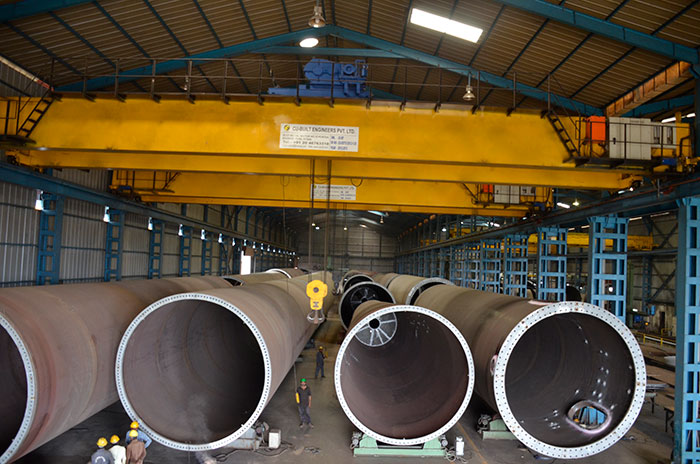Welding Automation in Wind Tower Manufacturing
Welding automation has become increasingly important in wind tower manufacturing as it can improve efficiency, productivity, and quality while reducing costs and minimizing the risks associated with manual welding.
Wind towers typically consist of large, tubular steel sections that need to be welded together to create the final structure. These welds must be precise and strong enough to withstand the extreme conditions that wind turbines are exposed to. Welding automation can help ensure the quality and consistency of these welds, while also speeding up the manufacturing process.
There are various types of welding automation technologies that can be used in wind tower manufacturing, such as robotic welding systems, automated welding machines, and welding manipulators. These systems can perform a variety of welding tasks, from welding seams on the outside of the tower to welding the internal connections between tower sections.
Welding role in wind tower building
Welding plays a crucial role in the construction of wind towers. Wind towers are typically made of steel, and welding is used extensively to join the different components of the tower together.
The tower sections are typically made from rolled steel plates, which are joined together using a variety of welding techniques, including arc welding and gas welding. In some cases, welding may also be used to attach brackets or other components to the tower.
Welding is important in wind tower construction because it helps ensure the structural integrity of the tower. The tower must be able to withstand high winds and other environmental stresses, so the welding must be of high quality and meet strict standards. Welding is also important for ensuring the tower’s longevity, as it helps prevent corrosion and other forms of damage.
Overall, welding is a critical component of wind tower construction and plays an important role in ensuring the safety, durability, and reliability of these important structure
Welding Rotators and welding Positioners for welding
Welding rotators and welding Positioners are two types of equipment commonly used in welding to assist with the manipulation and positioning of large or heavy work pieces.
Welding rotators are used to rotate cylindrical work pieces, such as pipes or tanks, during welding. The rotators consist of two or more motorized rollers that are mounted on a frame and can be adjusted to fit the size of the work piece. The work piece is placed on the rollers, which rotate it slowly and steadily as it is welded, ensuring even and consistent welds.
Welding Positioners, on the other hand, are used to position work pieces in the optimal orientation for welding. They consist of a table or platform that can be tilted or rotated to allow the welder to access all sides of the work piece without having to move around it. This can be particularly useful for welding large or heavy work pieces, as it allows the welder to work more efficiently and safely.
Both welding rotators and welding Positioners can help improve the quality and efficiency of welding by providing better access to the work piece and allowing for more consistent and even welds. They are particularly useful for welding large or complex structures, such as pressure vessels or wind towers, and can help reduce the time and labor required for these types of projects.

